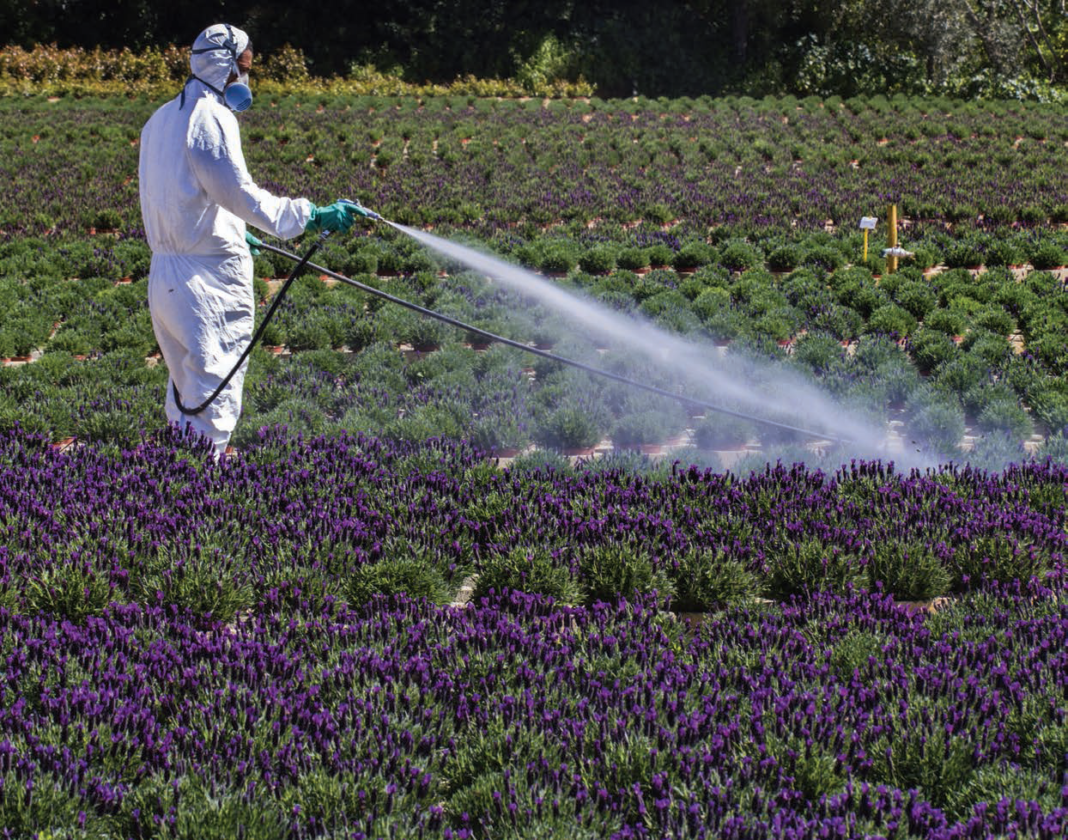Dónall Flanagan, lecturer in horticulture with Teagasc, clarifies the rules, regulations, and responsibilities of the Sustainable Use Directive and how it will impact your horticultural business
Do all deadlines creep up the same way the Sustainable Use Directive (SUD) one has? After 26th November 2015 only registered pesticide user will be allowed to spray professional plant protection products using a knapsack, boom or similar. The introduction of the SUD has been long flagged; nearly so long ago that it was not something to worry about but with the deadline fast approaching, it’s time to get prepared if you have not done so already.
While most of the promotion so far has been addressed to the farming sector, horticulture will have to comply with the new regulations in the same way. The ethos behind the SUD is to ensure greater safety for the environment, the consumer and the operator – it really is bringing essential professionalism to what can be very harmful in the wrong hands. For the non-professional or amateur user, there will be fewer products available and smaller sized packs, with the intention again of minimising opportunities for misuse. The Department of Agriculture Food and Marine (DAFM) is responsible for the roll-out of SUD in Ireland and there is a range of helpful material on their web site www.pcs.agriculture.gov.ie/sud
The impacts of SUD on nurseries has been seen already where chemical companies have chosen not to re-register products under the new SUD guidelines; some familiar chemicals are no longer available to us.
| Safeguard zones around water abstraction points (including wells) servicing the following numbers of people: 200m – 500 people 100m – 50/500 people 25m – 10/50 people 5m – 10 or fewer people 15m Landscape feature (karst area, sinkhole or collapse feature) |
Looking at the different aspects for nurseries and other horticulture sectors to adhere to the SUD:
1. Minimise pesticide use. Where a pest or disease etc is identified in the crop the grower should be able to justify the use of the treatment by going through the stages and trying to use the least harmful option first:
● Integrated pest management
● Husbandry practice, eg. move outside, decrease irrigation, alternative growing media
● Biological control, eg. nematodes, parasitic insects
● Correct pesticide use, eg. treating the correct organism at the correct stage, the correct rate only, suitable conditions etc.
Details must be recorded of plant protection products used and also the registered pesticide user who applied them. A sample record can be downloaded from the DAFM website.
In field production, there are also restrictions based on water bodies, boreholes and streams etc (see box). There are also buffer zones around hedges. These vary between 5m and 70m and are identified on the product label.
2. Training is required for pesticide users (PU) or operators of all sprayer types. Any nursery staff who have completed a Teagasc certificate or diploma in horticulture that included the pesticide application module will already have completed the training. They should register with the department. Other stand-alone modules* from City & Guilds or FETAC are acceptable and again the award holder can register with DAFM. This training will often be for either knapsacks or boom sprayers.
In nurseries, there are a variety of pesticide application methods in use, such as foggers, motorised knapsacks and gantry. Specific training courses for less common equipment are, not surprisingly, hard to come by. The DAFM is being pragmatic about this and advises users to complete a training course in the method that most closely resembles the application method being used, for example operating a motorised back sprayer, or complete knapsack training.
Depending on nursery size more than one trained user may be required to facilitate peak workloads, holidays etc. When purchasing professional plant protection products the retailer may ask for the pesticide user number or other forms of identification. However, sales can be made to non-registered users but the plant protection products must be applied by a registered user. This user could be another trained member of staff or a contractor.
3. Testing is not required for knapsack or handheld sprayers as they are exempt under the SUD. Testing of boom/blast sprayers is set out by the Department as follows. “All boom sprayers up to 3m wide and all blast and orchard sprayers must be tested at least once by 26th November 2016 (new sprayers are covered for five years from purchase)”. Other types of equipment will require testing; however, these details will be finalised in 2016. Locations for testers or testing centres can be found on the department website www.pcs.agriculture.gov.ie/sud.
FROM THE FRONT LINESKieran Dunne, owner and operator of L and K Dunne Nurseries, shares the top ten lessons he’s learned from ensuring his business is compliant 1. Ensure proper procedure from start, we work to a yearly plan. |
If you don’t know what you are doing, you will waste chemicals, time and money and achieve poor results. As a result of our best practice, we see SUD as a positive step and one in which we are happy and comfortable to work with to protect ourselves, our staff, customers and our environment. ✽
  Telephone: 01-804 0204 |










